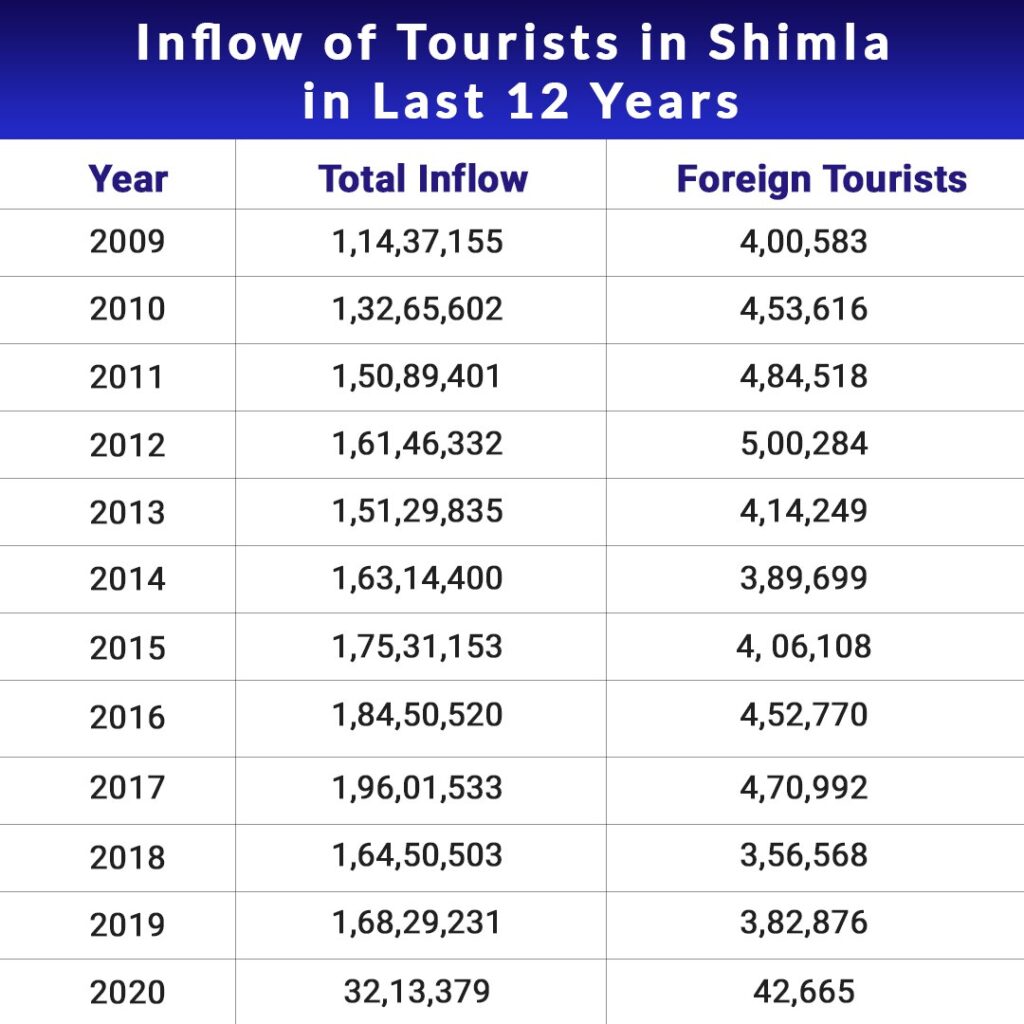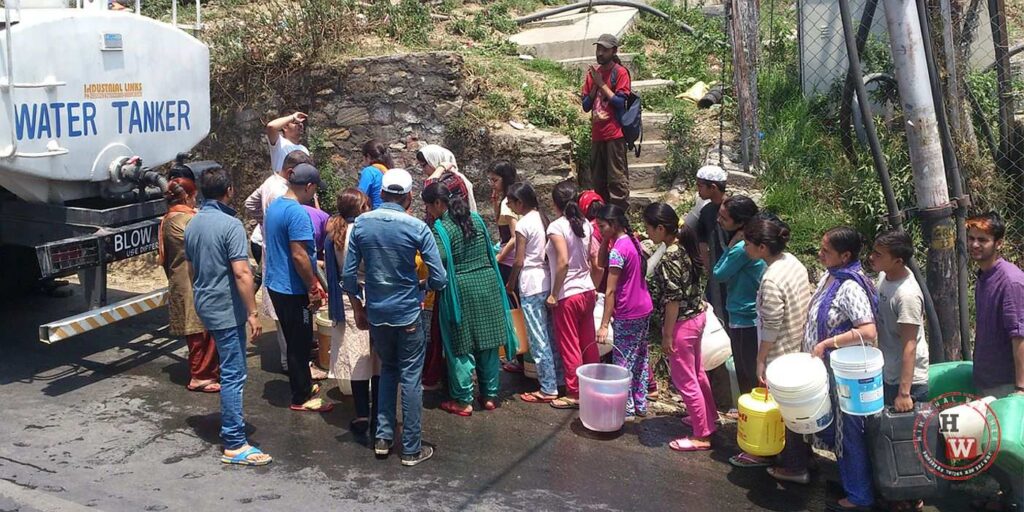Shimla – the majestic queen of hills is reeling under immense water shortage pressure. The intensity of the situation can be imagined by the call given out by the locals to all tourists to avoid visiting the city this summer.
According to Shimla Jal Prabandhan Nigam Limited (SJPNL), the erstwhile Summer Capital of India is experiencing an acute water shortage, disrupting daily life routine for the locals. SJPNL reports that the company procuring and distributing water in the Shimla municipal limits has noticed a striking difference of 2-3 MLD between the demand and supply during last few days.

“The city has been getting around 40 MLD, approximately 2-3 MLD, which is less than the town’s current requirements. Thus, there’s an utter need for the company to reschedule the water distribution, and we’re applying deductions for 20-30 minutes as and when the city needs it.” –Harmesh Bhatia, AGM-SJPNL
Shimla has seven water sources, out of which there are two primary water sources- the Nauti Khad (the one with Gumma as a part) and Ashwani Khad. However, the acute shortage is because these two water sources are witnessing a significant depletion in water level. Both these water sources are tributaries and sub-tributaries of River Yamuna and River Satluj.
The irrigation and public health (IPH) department lifts water from the source and then transports to treatment plants. The post treatment water is supplied to the tanks from where, the Shimla Municipal Corporation supplies water to the entire town.
The town’s requirement is around 45 MLD, as per recent reports by Shimla Municipal Corporation. But, the present yield is much less around 32 MLD, even on typical days. Gumma Scheme and Giri have an installed capacity of 20 and 24 MLD respectively and currently pump a combination of 20 MLD, as per sources.
Water scarcity has become a part and parcel of life for Shimla’s local population, however it is imperative to get to the root cause of the problem.
Analysing different facets of the situation, The Voices highlights the primarily reasons behind Shimla’s acute water crisis.
Tourist Upsurge:

No points for guessing this one. An exponential increase in the number of tourists is definitely adding fuel to the inferno. Studies show that around 15,000 to 20,000 tourists visit the Himalayan city every day during peak tourist season. In addition to the town’s resident population of 2.2 lakh, the number of tourists visiting over an average weekend is growing by 25,000-30,000 every year.
Water tankers are arranged for restaurants, hotels, and other tourist attractions.
Local’s are leaving messages on social media platforms, pleading tourists to avoid the city this summer.
Climate Change:
- Climate plays a crucial role in the water crisis and has impacted the city’s water supply system. The rare and scanty rainfall in this season was 80 percent deficient compared to usual monsoon months. The winter months, too, had less-than-usual precipitation during the winter months, making the season dry.
The water sources have gone 50% below the average.- Also, the residual water cannot be harvested because of flooding in Shimla, causing less water retention through the natural water ecosystem.
- Water sources in Shimla are glacier and snow-fed, which means that the impact of climate change affects the available water quantity, leaving groundwater sources as much more critical for the city in different sources, according to a research paper published by S.Singh in Water Policy.
“With the tourists pushing up the demand, weak monsoons are depleting the source water level. Since the town hasn’t had much rain in the past 10-15 days, there has been a decrease in water level in Ashwani Khud from 4.5 MLD to 1.5 MLD.”
–Rajesh Kashyap, member (Distribution) SJPNL .
“The warm conditions have expectations of continuity in the state over the next 4-5 days, making the dry season a responsible factor. The mean temperature is 7°C above the average temperature. And March 2022 was the driest month in the past 14 years, with a rain deficit of 95%, surely adding to the acute water shortage this year.”
–Harmesh Bhatia, AGM-SJPNL
Recently, Shimla received funding from central government’s AMRUT project for the town’s integrated development, which mainly includes the water supply system under the State Annual Action Plan. These include progressive steps towards augmentation and improvement of the existing water supply schemes for Chair, Giri, Chaurat, Ashwini Khad, Seog, and Gumma catchments. Additionally, it made provision of the water supply lines, leak detection machine, pumping machinery, sluice valves, four water tankers and water metres.
All these water sources provided water in the city’s 25 wards and filtration plants at natural springs for enhancing the water quality and providing adequate water supply to residents.
Irregular billing hours, faulty payment systems, and building plans and unsustainable construction and population pressure are just a few reasons for the deteriorating water supply to the region.
Responsible ‘green tourism’ , better urban planning with the active participation of all stakeholders are key factors to counter the current challenge.
In the long run however, better coordination between the administration and civil society along with a responsible role taken not just by the tourism industry but also by the tourists is the bare minimum needed to ensure that the “Queen of Hills” never looses it’s prestigious title, grace and crown.
Edited by: Raghujit S. Randhawa

